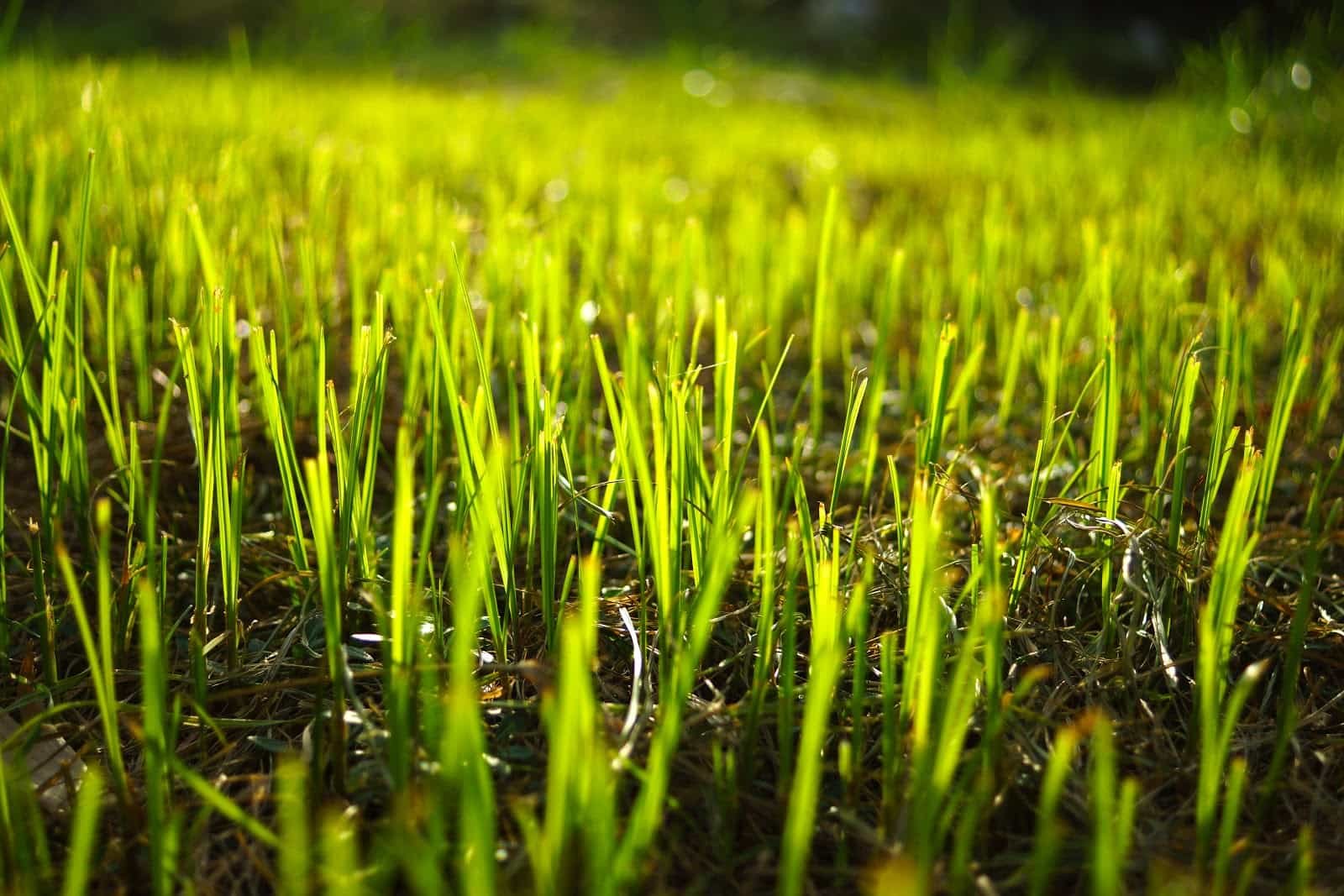Fall Seeding Tips for Kansas City Homeowners
fall seeding tips
Fall is the perfect time to thicken your lawn with new grass or to fix any problem areas caused by traffic, disease, insects, etc. The lower temperatures of fall provide the perfect conditions for new grass seed to germinate without getting burned up by the high temperatures of summer.In Kansas City, our seeding window is short, it only consists of the month of September. So if you’re considering seeding your lawn, read on to find out what you need to know.
Pre-Seeding Decisions
Since there’s more to getting a good stand of grass than just sprinkling some seed around, the lawn coaches at Heritage Lawns and Irrigation have put together our top tips for fall seeding. Follow these guidelines and your lawn will look great come spring. Here are a few decisions you will have to make before you get started:Decision 1 - First, you need to decide how much of your lawn needs seeding. Some homeowners choose to seed the whole lawn, while others only seed a section. The answer depends on two factors:
1. How much can I afford to water? - Watering new seed is extremely important and if the weather turns hot and dry you may have to water up to three times a day. So, this year, how much can you afford and/or handle watering?
2. Do I have outdoor pets? - We suggest setting up a temporary fence in your backyard. This way you can seed half your yard and let Fido have the other half. Then next year you can seed the opposite side.
Decision 2 - Decide if you are going to kill out what is there or just fill in what you already have. The main reason people decide to kill out their lawn and start over is to achieve a uniform look in the Spring. Usually, these homeowners have undesirable grasses in their lawn or a mixture of cool and warm weather grasses. TIP: August is the ideal time to kill out a lawn because it takes two to four weeks.
Prep Steps
Before you get started, prepare your lawn a few days ahead of time by following these steps:
Water the lawn for a few days before seeding, but not on the day of seeding
Mow the lawn shorter than usual (1.5 - 2 inches tall)
Aerate the lawn
Aeration Helps Prepare Your Lawn for Receiving Seed
At Heritage, we suggest aerating your lawn once a year to keep it healthy. Good seed-to-soil contact is critical for successful germination. For the new seedlings to get established they have to get through the thatch layer and down into the soil. Aerating before seeding is ideal as the plugs of dirt and thatch that are removed create perfect places for seeds to germinate. Aeration also helps your existing grass by loosening up the soil to allow for better root growth and breaking up the thatch layer to allow more rain and nutrients to reach the roots.
Use the Right Mix of Grass Seed
Get the Best of Both Worlds
Here in Kansas City, we recommend a 50/50 mixture of Bluegrass and fescue. Both grow well in this region and their differences complement each other to create a balanced turf. Fescue is strong and heat resistant so it handles the heat and clay soil well. Bluegrass adds a rich dark green hue and has a softer texture that makes walking on your lawn in bare feet more enjoyable.
Don’t Use Just Any Seed
Use Cheap Seed and Pay the Price!
When it comes to grass seed, you have to be very careful about what you buy. Most seed has a percentage of weed seed and other seed mixed in with it. Sounds crazy, but that’s just the way the manufacturers package it. Regardless of whether you want fescue, Bluegrass or something else, quality is everything. When you buy seed, be sure to check the labels carefully. You want a mix that has 0% Weed Seed and 0% Other Crop. Otherwise, you’re just adding more weeds while you seed. As little as .01% can mean you are planting over 250 weeds in the average lawn. It may cost a bit more for quality seed, but you’re either going to pay for it now, or pay for it later when you buy weed control products. Bottom line - don't skimp on seed.
Water, Water, Water
If You Let It Get Dry...It Will Die!
Even though temperatures are cooler and conditions are less dry than in the summer months, water is still the most critical element when starting new seed. The seed must stay moist in order to germinate. If you let the seed dry out, you’re done. So always remember to water your lawn thoroughly and often. If you’re in doubt, feel the soil and if it doesn’t feel moist to the touch, it needs water. If you keep the seedbed consistently damp, your seed will germinate more quickly than if it gets soggy and then dries out. Light frequent watering is the ticket. Damp but not soggy.

